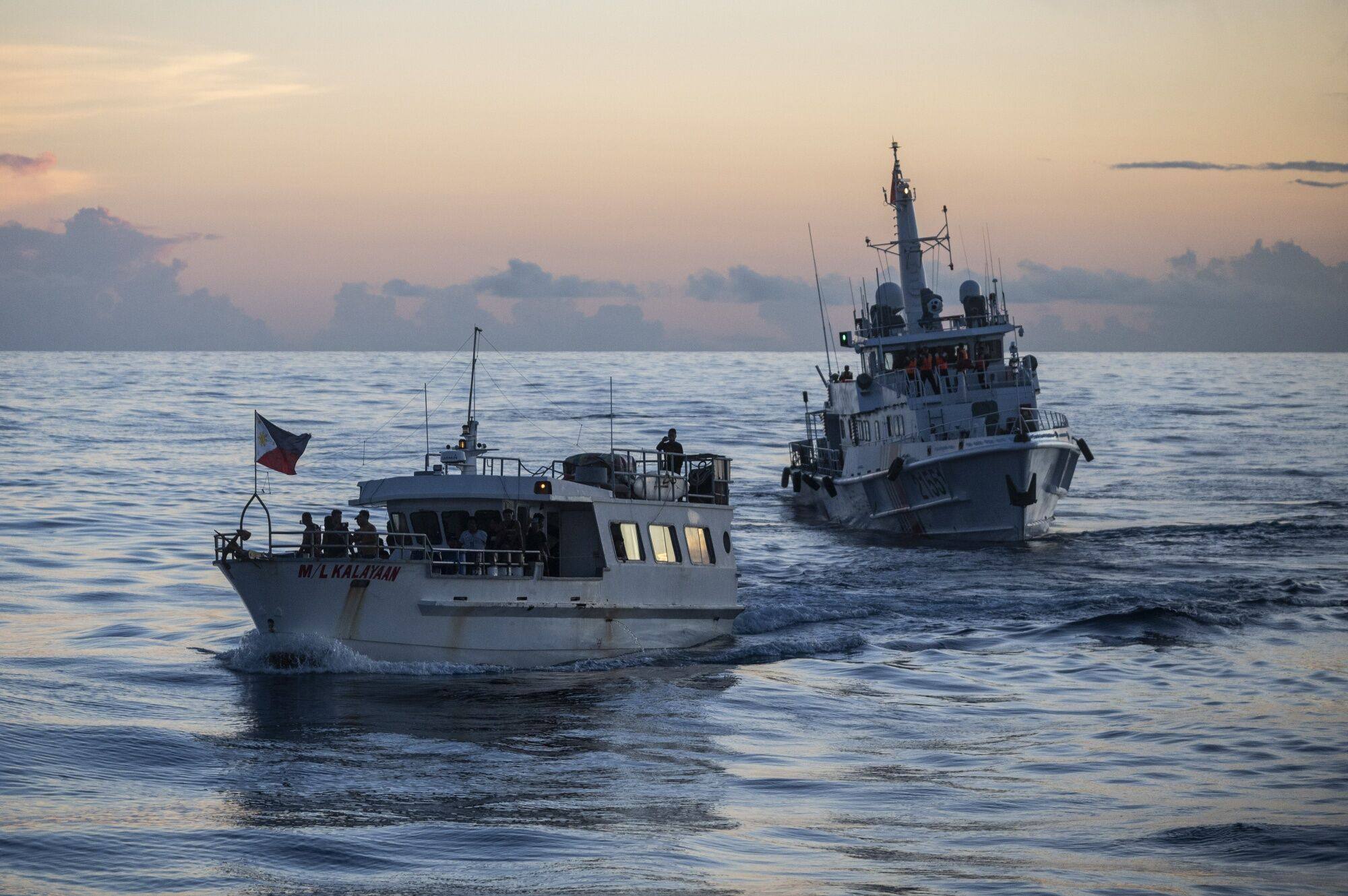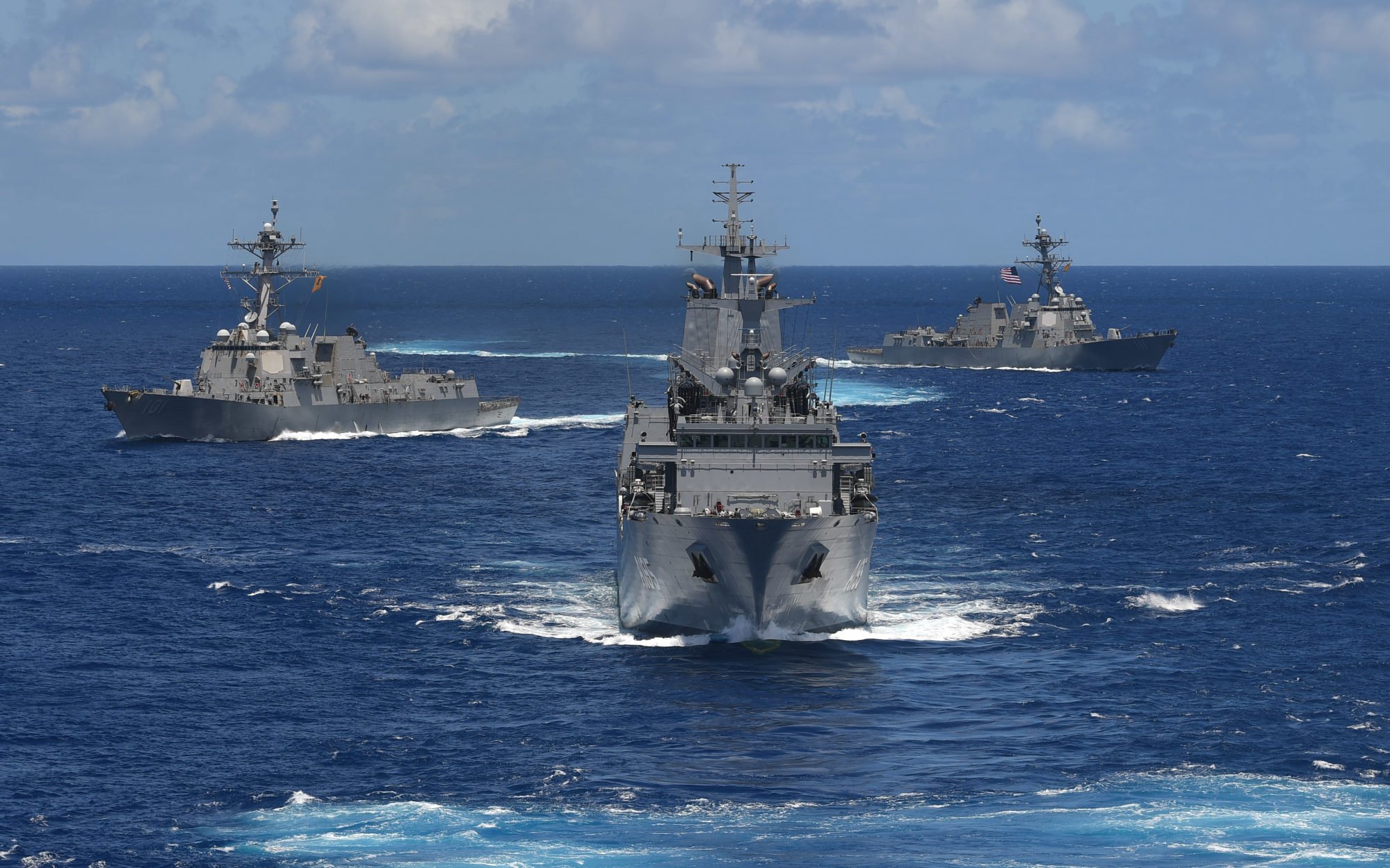In the strategically important South China Sea, Philippine and Chinese ships have become embroiled in increasingly frequent naval skirmishes, including two recent collisions near the disputed Second Thomas Shoal.
Tensions appeared to have eased somewhat after Philippine President Ferdinand Marcos Jnr told President Xi Jinping on the sidelines of the Asia-Pacific Economic Cooperation summit last month that disputes over the waterway should not define bilateral ties.
Do you have questions about the biggest topics and trends from around the world? Get the answers with SCMP Knowledge, our new platform of curated content with explainers, FAQs, analyses and infographics brought to you by our award-winning team.
But back at home, Marcos made it clear that the Philippines “will not give up a single square inch of our territory to any foreign power” and would continue to adhere to an international rules-based order.
Manila even scrapped US$5 billion worth of rail projects with China, citing foot-dragging by the Chinese over financing, but analysts have suggested that it was Manila’s refusal to back down in the contested waters that had resulted in the holding back of cash pledges.
Bilateral tensions, however, have not affected trade between the two neighbours. Chinese demand for Philippine minerals, including nickel ore, remained robust at the China International Import Expo in Shanghai last month.
Amid the maritime tensions, China held joint military exercises with five Southeast Asian countries – Cambodia, Laos, Malaysia, Thailand and Vietnam, but not the Philippines – in what has been seen as a bid by Beijing to play “catch-up” with America’s defence relationships in the region.
Not to be outdone, the United States followed up with an 11-day joint military exercise involving nearly 3,000 members of elite forces from the Philippines, the US, Japan, South Korea and Britain to reportedly improve “interoperability”.
Soon after, the Philippines and Australia began their first joint three-day sea-and-air patrols in the South China Sea to underscore what they say is a commitment to a “peaceful, secure and prosperous region”.
The maritime disputes and the lack of trust and confidence these have generated have prompted the head of a top Chinese think tank to call for a strategy of opening up the marine sector, which includes cooperation in the marine economic sector.
But this might be too little, too late. Vietnam is believed to be ramping up its dredging and landfill work in the Spratly Islands, creating an additional 330 acres of land since December last year, according to a US think tank report.
In the meantime, a Chinese carrier strike group headed to the South China Sea after completing a week-long drill near Japan’s waters, according to Japan’s defence ministry.
The drill was held shortly after Japan and the Philippines discussed strengthening maritime and defence cooperation, including a Reciprocal Access Agreement that would enable military personnel from each country to visit the other for joint training exercises - a move widely seen to be targeting China.
Global Impact: are we headed for a new dynasty of US-China relations after Xi-Biden meeting?
When Xi and Biden met during their summit in San Francisco, both sides pledged to “enhance trust” and “manage differences”, including over Taiwan and the South China Sea.
But within days, China conducted two one-day live-fire drills in the South China Sea as the US and the Philippine navies carried out joint sea and air patrols, with Beijing calling Washington “the biggest disrupter of peace”.
With tensions a regular feature in the disputed waterway, analysts do not appear to be holding out much hope, even as China and Southeast Asian nations agreed to start on the third reading of a long-delayed code of conduct for the South China Sea.
Citing the slow progress of the regional pact, the Philippines said it has approached neighbours such as Malaysia and Vietnam to discuss a separate code of conduct to ensure peace in the region.
60-Second Catch-up
South China Sea disputes should not define ties, Philippine leader Marcos tells China’s Xi at Apec
Beijing and Manila trade accusations over ‘provocative’ ship collisions near disputed atoll
Opinion: Amid choppy South China Sea waters, Philippines and Beijing should boost dialogue to calm tense ties
Beijing, Manila dispute details of latest Scarborough Shoal military encounter
Beijing rebukes Washington after warning off US warship in South China Sea
US, Chinese diplomats meet in Beijing to discuss maritime issues including South China Sea
Deep dives

Pressure mounts on China as Philippines says it will never give an inch
-
A view of Beijing as coercive and aggressive has the potential to push countries towards the West if it does not soften, analysts say
-
China ‘cannot keep shooting itself in the foot and then blame Manila or Washington for pulling the trigger’, says Wilson Centre fellow
Philippine President Ferdinand Marcos Jnr said Manila will never abandon its claims in the South China Sea amid heightened tensions with China in the disputed waterway, according to a strongly-worded statement.
“As I have said before, and I will say again, the Philippines will not give up a single square inch of our territory to any foreign power,” he told a forum in Honolulu on Sunday, according to his press office, without explicitly naming Beijing.

Is Philippines’ alliance building to counter China a ‘major naval war’ risk?
-
Apart from the US, the Philippines is expanding its military alliances with Japan, Australia and Germany amid growing tensions with China
-
Without more top-level talks between Manila and Beijing to ease tensions, analysts say both sides risk ‘miscalculations’ that could lead to war
China’s escalation of so-called grey-zone activities against the Philippines, and Manila’s response in seeking more allies, could cause already-brewing tensions in the region to spiral out of control.
This was the assessment by analysts weighing in on the recent spate of actions in the disputed South China Sea, particularly over the Second Thomas Shoal, which Manila calls Ayungin, an atoll about 190km (120 miles) northwest of the Philippine island of Palawan.

From favourite to ‘forgotten’: Philippines’ sea dispute sees China pull funds
-
In scrapping US$5 billion worth of rail projects, the Philippines cited Chinese foot-dragging over financing rather than their squabbles at sea
-
But observers speculate it was Manila’s refusal to back down in the disputed waterway that had caused Beijing to hold back on the cash
The government letter to Huang Xilian, China’s top envoy in Manila, was polite yet unequivocal as it ran a thick red line through a US$1.4 billion plan for a railway in the southernmost island of Mindanao, stating the Philippines “is no longer inclined to pursue” long-promised Chinese financing for the 100km track.
It was another signal, analysts say, of how disputes over territory in the South China Sea are scuttling the relationship between Manila and Beijing, as President Ferdinand Marcos Jnr cancels billions of dollars of promised Chinese loans to fund a network of much-needed railways – and China strangles its pipeline of cash for infrastructure projects.

What a 5-nation military exercise says about US strategy in the Indo-Pacific
-
Kamandag 7 marks heightened US interest in troop deployment in the region according to perceived challenges
-
The exercise sees the deployment of the Marine Rotational Force-Southeast Asia, which allows the US to be first responder to any crisis in the Indo-Pacific region
An 11-day joint military exercise involving nearly 3,000 members of elite forces from the Philippines, United States, Japan, South Korea and Britain is under way and focused on “interoperability” to counter any crisis in the Indo-Pacific region, as geopolitical tensions mount in the south and east China seas.
“Kamandag 7” is part of a series of training exercises across Southeast Asia comprising 2,749 personnel, including 902 US marines. Some of the Americans hail from a newly created fighting unit, formed by the US last year to be the first responder in the Indo-Pacific.

China and US urged not to let disputes overshadow ocean governance efforts
-
An event in China’s Hainan province heard that the two must lead the way on international efforts to tackle problems such as piracy and climate change
-
China and a number of other countries in the region are embroiled in a series of long-running territorial disputes in the resource-rich waters
China and the United States have been urged to work together and lead the way on global ocean governance.
An event held on the Chinese island of Hainan earlier this month heard that progress will not be possible without cooperation between the two superpowers, who were urged not to let regional maritime disputes overshadow efforts to address issues such as piracy, climate change and other environmental threats.
Global Impact is a weekly curated newsletter featuring a news topic originating in China with a significant macro impact for our newsreaders around the world.
Sign up now!
More from South China Morning Post:
- Global Impact: Xi-Biden Apec meeting creates more questions than answers with many contentious issues still on the table
- Global Impact: China’s state secrets revisions move to address ‘worst-case and most extreme scenarios’
- Global Impact: China, Australia ‘embark on the right path’ after Anthony Albanese meets Xi Jinping in Beijing
- Global Impact: has economic slowdown prompted Beijing rethink as Xi-Biden Apec meeting nears reality?
- Global Impact: China’s response to Israel-Gaza war shows how Beijing is firmly aligned with the Global South
For the latest news from the South China Morning Post download our mobile app. Copyright 2023.





